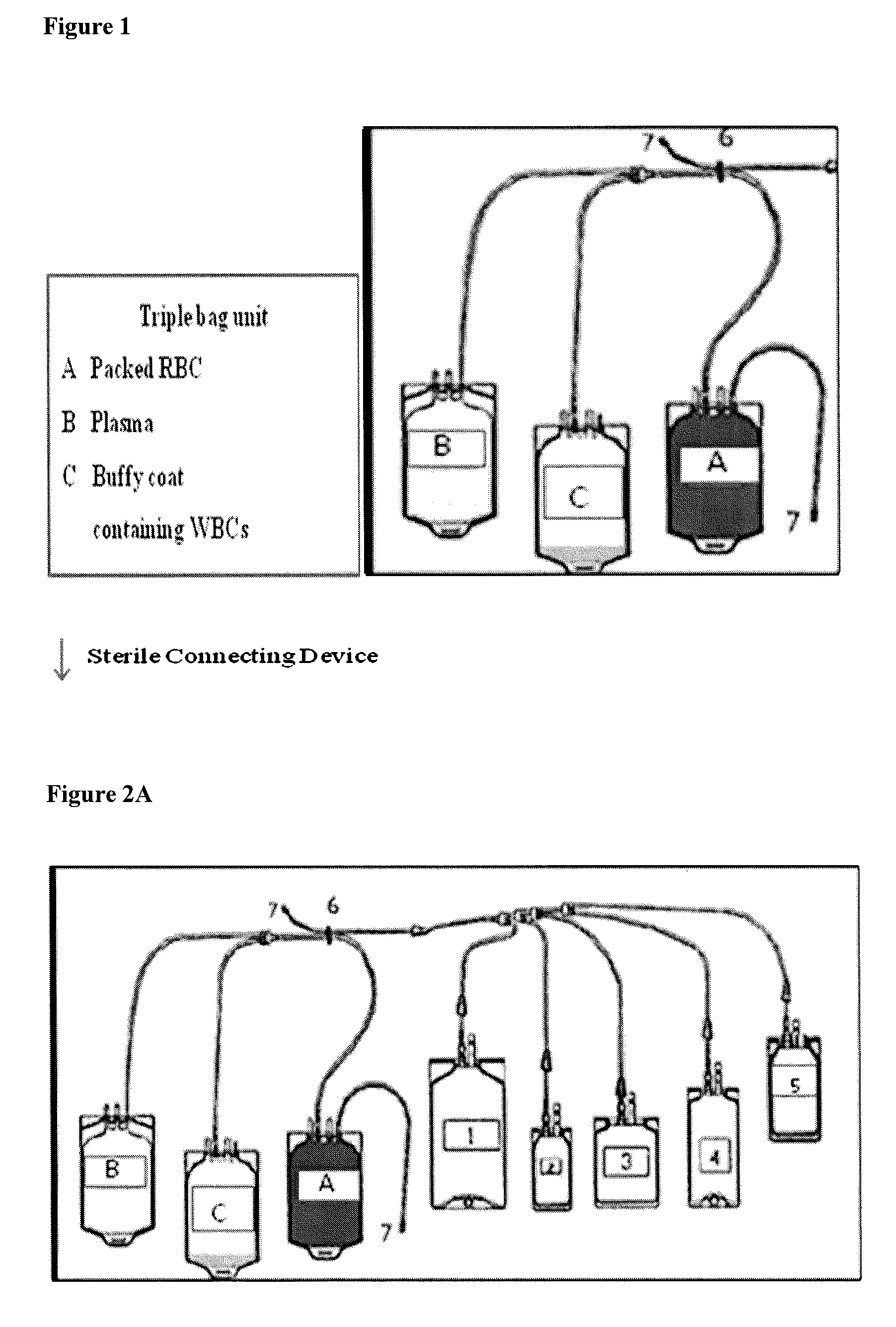Activated leukocyte conditioned supernatant and uses for wound healing
a technology of activated leukocytes and supernatants, which is applied in the direction of prosthesis, peptide/protein ingredients, drug compositions, etc., can solve the problems of decreased quality of life, increased morbidity and mortality, etc., and achieves effective wound healing, reduced the likelihood of deleterious side effects, and high concentration
- Summary
- Abstract
- Description
- Claims
- Application Information
AI Technical Summary
Benefits of technology
Problems solved by technology
Method used
Image
Examples
example 1
Analysis of Cellular Activation
[0089]An activated leukocyte composition made in accordance with a preferred embodiment of the present invention for conditioning of serum, was characterized by the analysis of cell surface markers, namely CD11b, CD62L and CD69 on various leukocyte populations (granulocytes, monocytes and lymphocytes).
[0090]CD11b is an adhesion receptor for ICAM-1 (CD54) and other ligands. It is expressed mostly on granulocytes and monocytes / macrophages but at lower levels also on lymphocytes. Expression of CD11b on cell surface increases upon leukocyte activation. In addition CD11b changes conformation. Activated form of CD11b is recognized by the antibody CBRM1 / 5. Non-activated form of CD11b is recognized by a different antibody (D12).
[0091]CD62L is an adhesion receptor from a selectin family. It is constitutively expressed on all classes of leukocytes including granulocytes, monocytes and lymphocytes. Upon activation, leukocytes rapidly shed off CD62L from their sur...
example 2
Analysis of Secretion of Cytokines by Activated Leukocytes During Incubation in Serum
[0101]An activated leukocyte composition containing 10×106 cells was centrifuged, and the cell pellet resuspended in 5 ml of serum in accordance with a preferred embodiment of the present invention. The concentration of IL-8 and other cytokines was measured at various time points of incubation at 37° C. using optimized ELISA plates from R & D Systems. Concentrations of cytokines (pg / ml) in serum used for leukocyte resuspension (without leukocytes) were measured in parallel and subtracted from values produced in the presence of activated leukocytes. The results of five experiments for IL-8 are summarized as Mean±SD in Table 4. The results of additional experiments for various cytokines and growth factors (GF) are summarized in Table 5 (n>10).
[0102]
TABLE 4Concentrations of IL-8 (pg / ml) released intoserum by activated leukocytes.Time of incubation of ALC with serum0.5 hour1 hour5 hours1115 ± 5192581 ± ...
example 3
Comparison of the Ability of Leukocytes Sampled from Raw Material (Fresh Buffy Coat) and from Intermediate and End Stages of the Production Process to Release Cytokines and Growth Factors
[0105]Leukocytes were sampled at three time points: immediately prior to the beginning of the production process (fresh buffy coat (FBC)); right after the first incubation (incubated buffy coat (IBC)); and at the end of the activation process (EAP), meaning after hypo-osmotic shock, followed by 90 min incubation with serum at 37° C. At each time point, leukocyte composition containing 10×106 cells was centrifuged and the cell pellet was resuspended in 5 ml of culture medium (RPMI) or original medium corresponding to each sample (plasma for fresh buffy coat, and serum for the incubated buffy coat and final product) in accordance with a preferred embodiment of the present invention. Leukocytes from each sample were incubated for 1 hour in RPMI and for 5 hours in plasma / serum at 37° C., and the concent...
PUM
| Property | Measurement | Unit |
|---|---|---|
| temperature | aaaaa | aaaaa |
| temperature | aaaaa | aaaaa |
| temperature | aaaaa | aaaaa |
Abstract
Description
Claims
Application Information
 Login to View More
Login to View More - R&D
- Intellectual Property
- Life Sciences
- Materials
- Tech Scout
- Unparalleled Data Quality
- Higher Quality Content
- 60% Fewer Hallucinations
Browse by: Latest US Patents, China's latest patents, Technical Efficacy Thesaurus, Application Domain, Technology Topic, Popular Technical Reports.
© 2025 PatSnap. All rights reserved.Legal|Privacy policy|Modern Slavery Act Transparency Statement|Sitemap|About US| Contact US: help@patsnap.com


